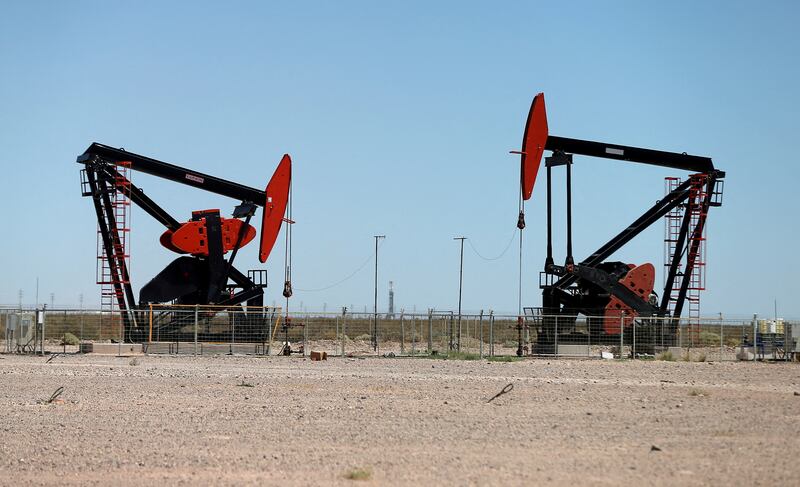Oil prices fell for a third straight day on Thursday as rising Covid-19 cases in China, the world’s largest crude importer, continue to raise concerns about fuel demand.
Brent, the benchmark for two thirds of the world’s oil, was trading 1.21 per cent lower at $82.25 a barrel at 9pm UAE time while West Texas Intermediate, the gauge that tracks US crude, was down 0.99 per cent at $78.18 a barrel.
Countries are imposing new Covid-19 measures on travellers coming from China, which has had a surge in infections following the easing of pandemic restrictions earlier this month.
The US has become the latest country to require all travellers from China to show a negative Covid-19 test result before flying to the country.
Italy will begin to test all passengers arriving from China for the coronavirus after about half of the passengers on two flights to Milan were found to have the virus, Bloomberg reported.
China’s reopening "will not only boost global growth, but also energy and commodity prices - hence inflation, the interest rate hikes from central banks and potentially the global Covid cases", Ipek Ozkardeskaya, senior analyst at Swissquote Bank, said.
Oil prices have recorded two straight weeks of gains, in part due to rising optimism over the recovery of oil demand in China, the world’s second-largest economy.
On Monday, China's National Health Commission said it would end its quarantine requirements for inbound travellers from January 8. The measures have been in place since the start of the pandemic.
“China's success in pivoting away from zero-Covid could be key to all of this … we may have to wait some time to fully understand the implications for the economy and therefore oil demand,” said Craig Erlam, a senior market analyst at Oanda.
“The outlook remains highly uncertain for the oil market and recent sanctions by the G7 and countermeasures by the Kremlin do little to change that at the moment."
Rising Covid cases in China, global political tensions and economic headwinds dented investor confidence sending markets in Europe lower on Thursday.
The UK's FTSE 100 Index was dragged down 0.6 per cent, while France's CAC 40 fell 0.5 per cent and Germany's DAX slipped 0.23 per cent.
On Tuesday, Russian President Vladimir Putin signed a decree that bans the supply of oil and related products from February 1 for five months to nations that abide by a price cap on its exports.
On December 5, the EU, Australia and the Group of Seven advanced economies agreed to place a price cap of $60 on global purchases of seaborne Russian crude.
The ceiling aims to reduce Moscow’s oil and gas revenue while maintaining adequate supplies of crude on the global energy market.
Deputy Prime Minister Alexander Novak was quoted as saying by the RIA news agency last week that Russia may cut its oil output by 500,000 barrels per day to 700,000 bpd in early 2023 as it responds to the price cap on its oil and related products.
US crude stocks fell less than expected by about 1.3 million barrels in the week ending on December 23, according to media reports citing data from the American Petroleum Institute.
Analysts on average were expecting a drawdown of 1.5 million barrels, Reuters reported.
The indicator, which shows the level of oil and product stored, gives an overview of US petroleum demand. If the increase in crude stocks is more than expected, it implies weaker demand and is bearish for crude prices.
Futures gained earlier this week in response to the blizzard that has battered the US and led to refinery closures in the oil-rich Texas Gulf Coast area and the cancellation of thousands of flights.
More than 1.8 million bpd of Texas’s oil-processing capacity had been disrupted by the freezing conditions, according to Bloomberg estimates.
The severe storm that hit North America disrupted the power supply in some areas, with about 250 million American and Canadian residents affected by the storm.






